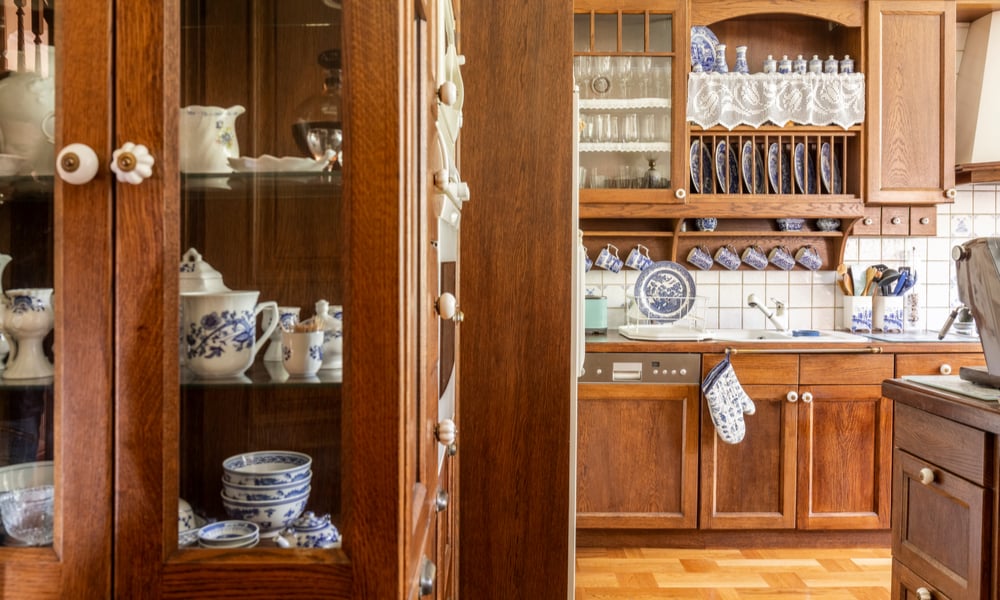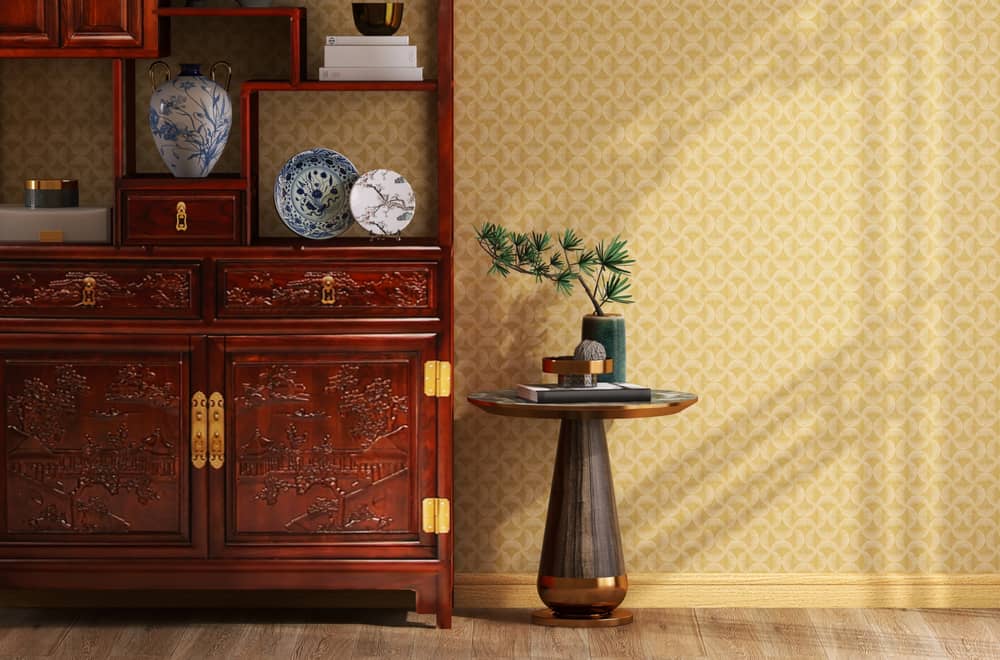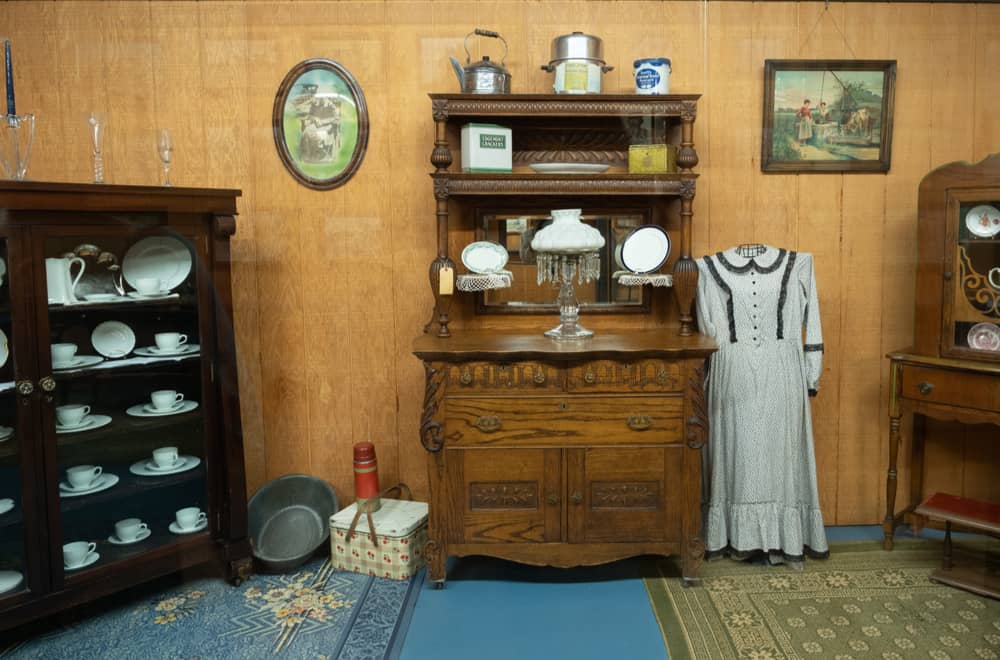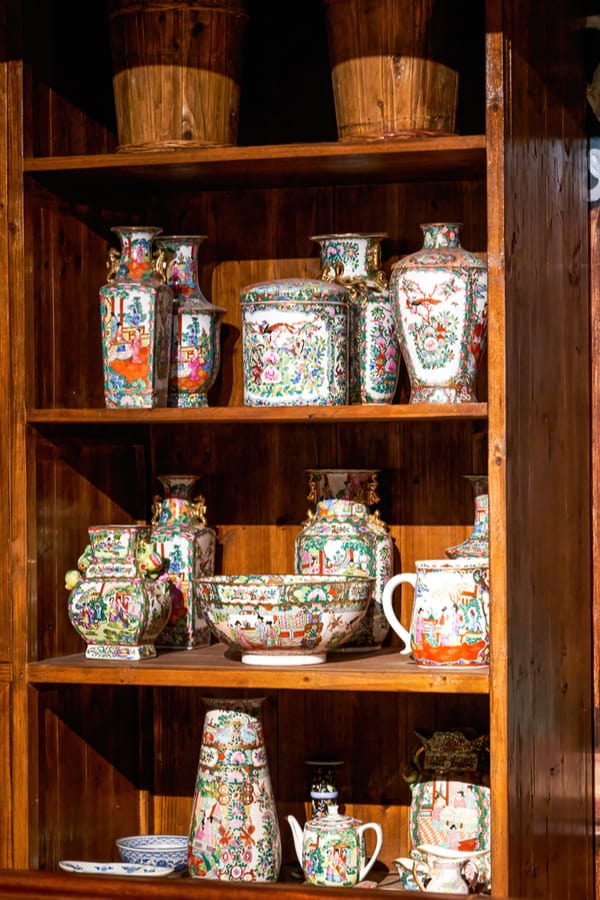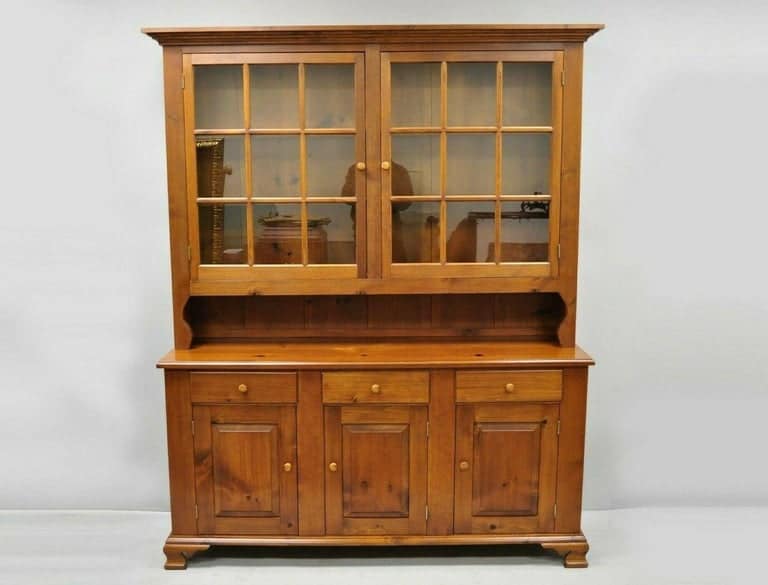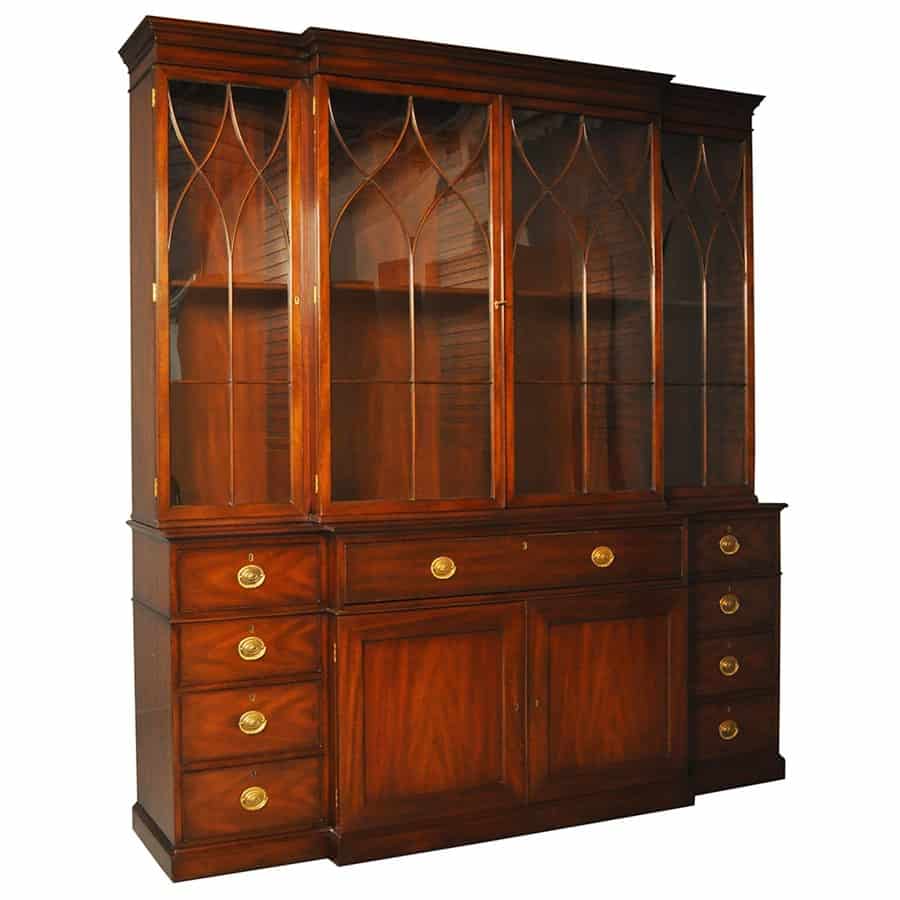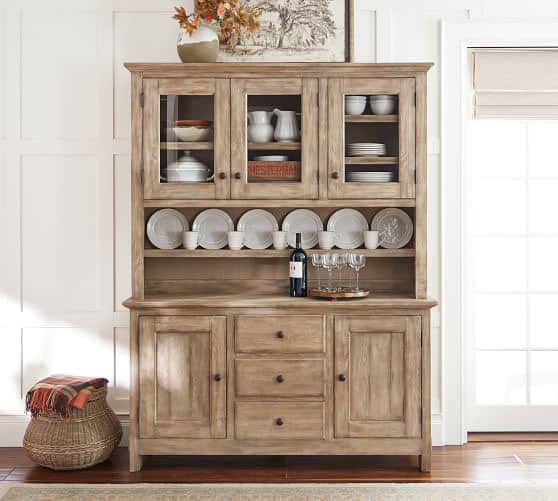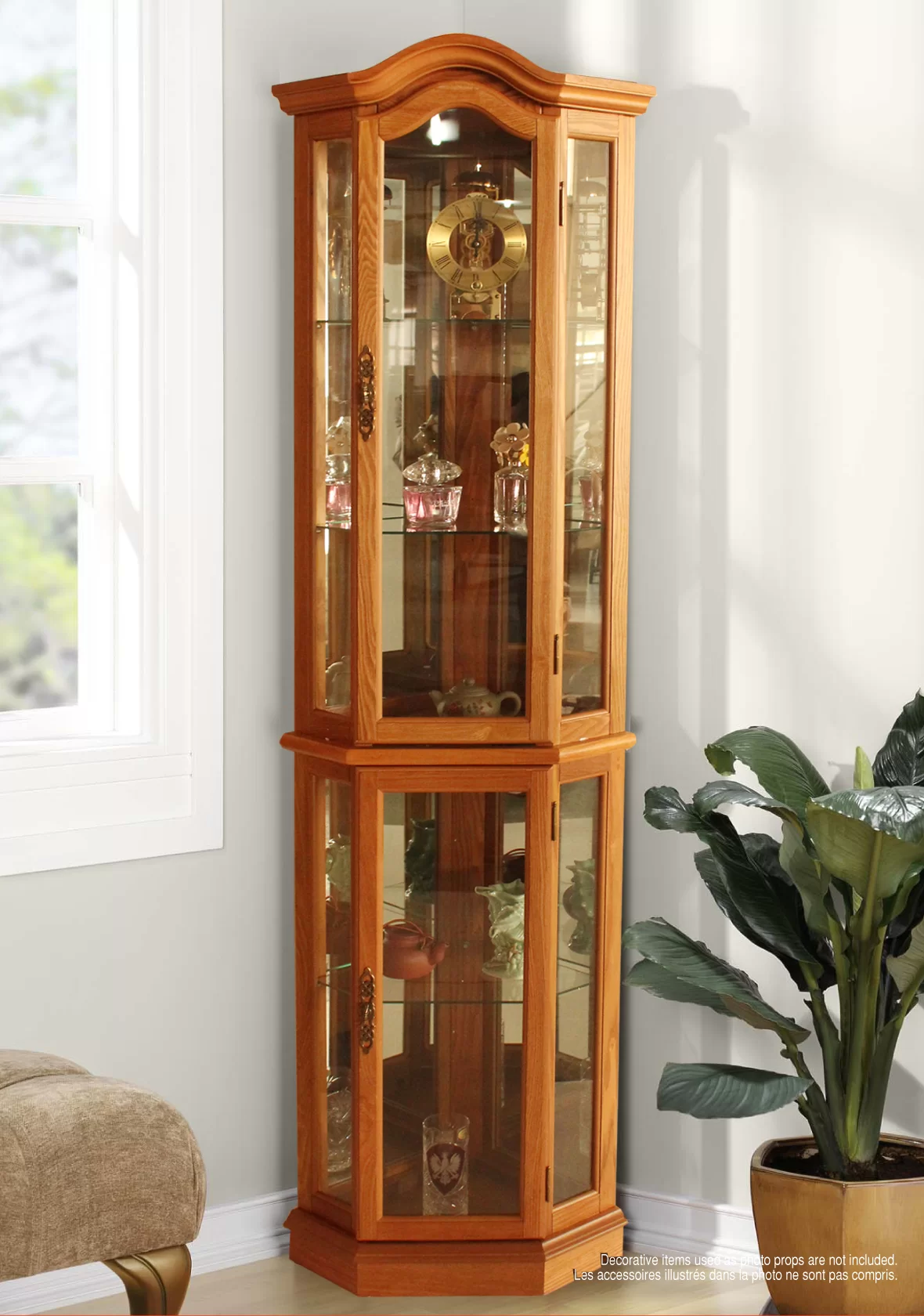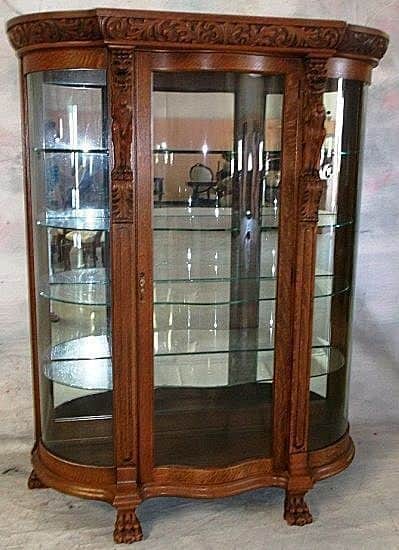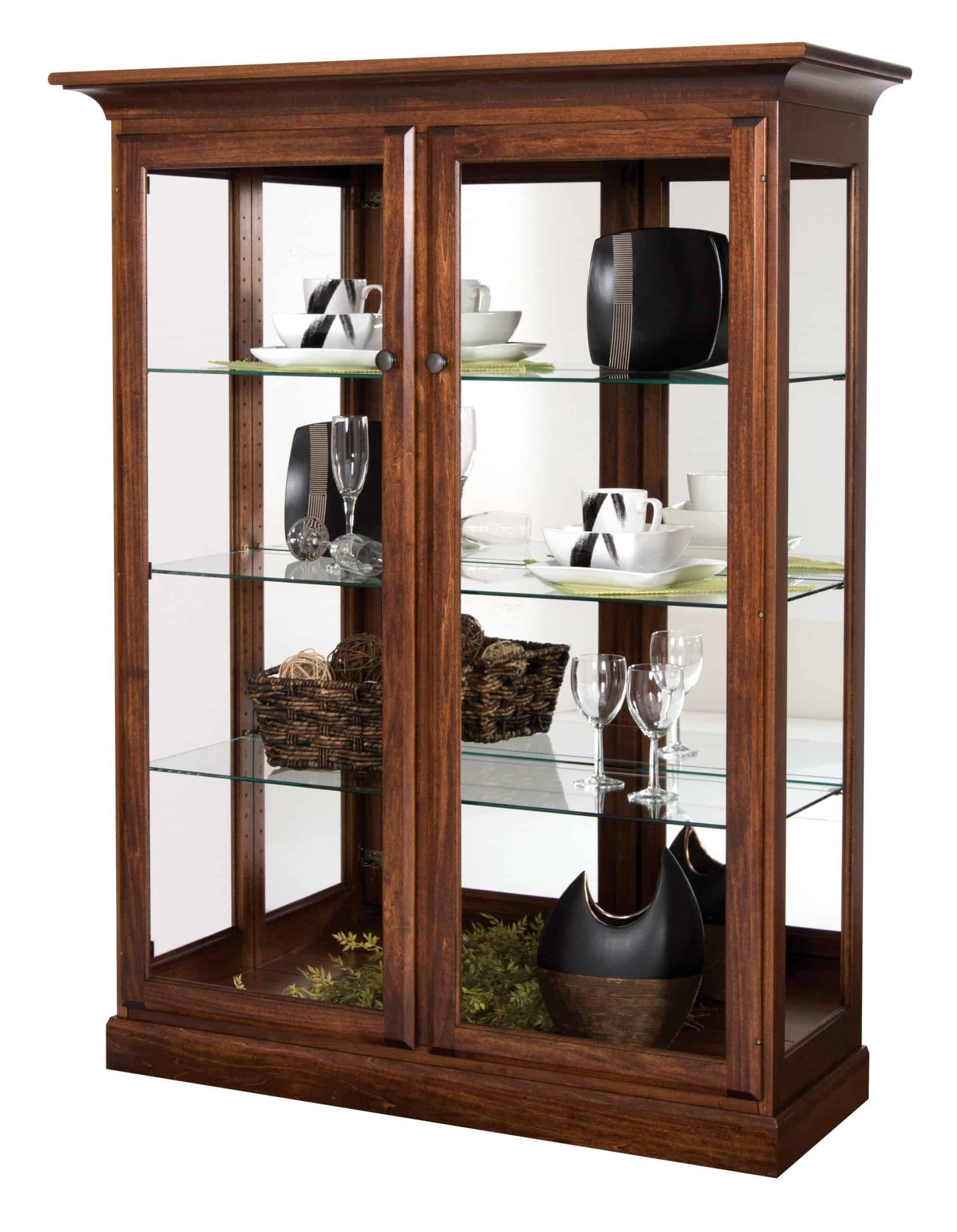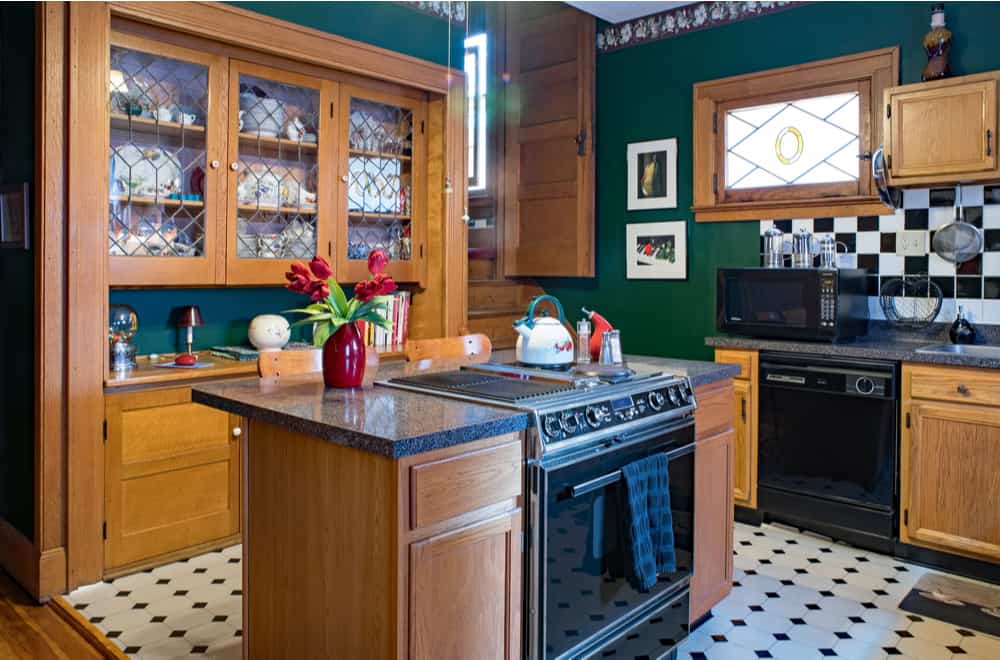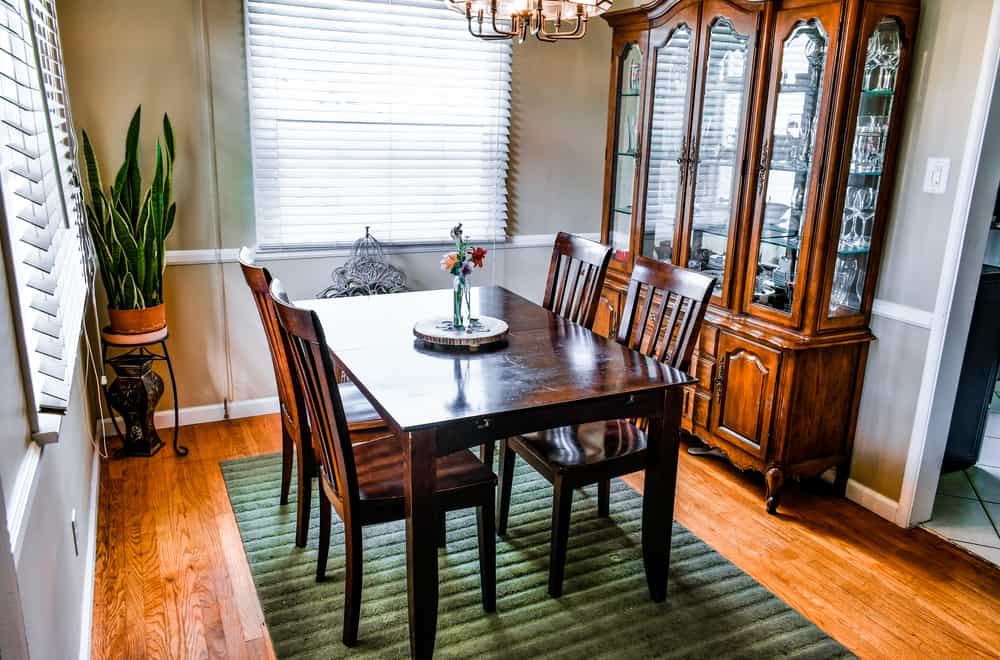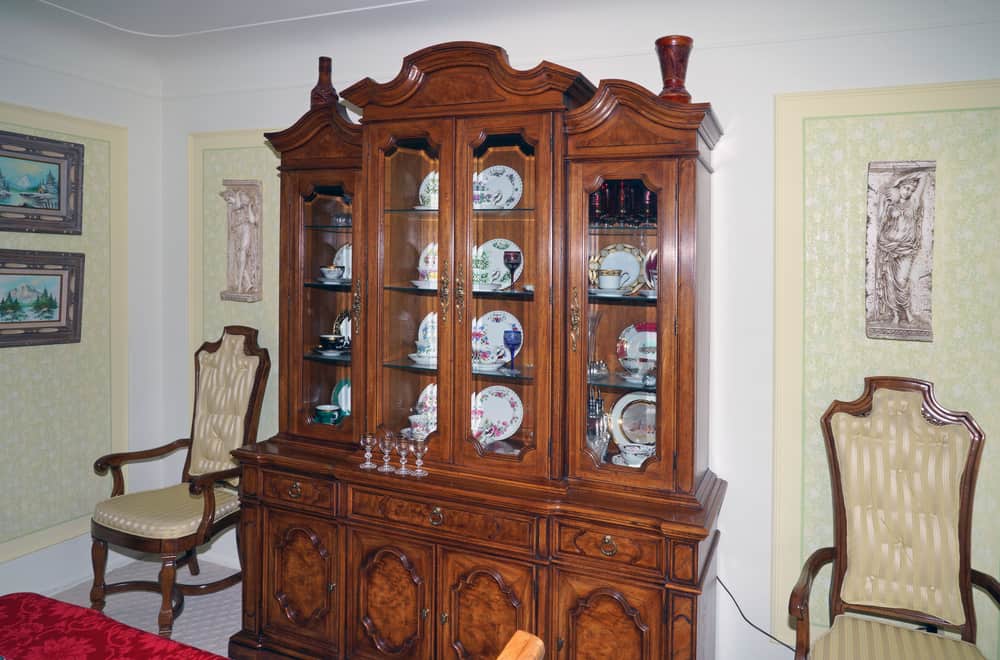The china cabinet production still exists, but the popularity of these elegant pieces of furniture is not as significant as it used to be. On the other hand, collectors still like them. Therefore, you should be careful to avoid fraud since many of the cabinets available on the market are just seemingly antique.
You may have a question: ‘How much is my antique China cabinet worth’? The answer can be tricky since you can find models worth a few dollars to tens of thousands bucks, depending on their condition, age, style, used material, and finishing. In most cases, a professional appraiser can help you with any dilemma you possibly have.
Table of Contents
Antique China Cabinet History
Porcelain cabinets became fashionable in England and the Netherlands in the late 17th century. The royal couple, William III of England and Mary II of England, specially contributed to their popularity, mainly because Queen enjoyed collecting Chinese pottery.
Cabinets from that early period were made of walnut wood and had an uncomplicated design. It was not until the middle of the 18th century that the design became more complex with specially created doors. These innovations caused the entire cabinet to become lighter.
What Is an Antique China Cabinet?
Many people believe that antique china cabinets originally come from China, but that is not entirely true. In fact, these pieces of furniture got their names after their primary use to store and display china.
It was trendy in the 17th century to collect different china styles and designs from worldwide. People wanted to show their collectibles, and these cabinets provided the necessary collectibles’ visibility.
Several manufacturers recognized that need and got a business idea to design and produce cabinets, especially pieces convenient for storing china. Over the years, people began using them for different purposes and storing other items on the shelves.
Antique China Cabinet Styles
Antique china cabinets will look beautiful in your dining area if you prefer adding a sense of antiquity to your home.
If you are lucky, you have inherited such an elegant cabinet from your mother or grandmother. In such a case, recognizing its style can help you learn more about its history and use in your home.
On the other hand, you can decide to buy one of those antique cabinets, so it is crucial to find out how to pick out the right piece to best display your china collection.
It is essential to check it thoroughly and estimate whether it is genuine or fake antiquity in both cases. As always, your first step should be to locate a label or identify a mark when it comes to furniture.
In most cases, furniture manufacturers place a stamp on their furniture. You should look for it in drawers, on the cabinet back, or one of the sides.
Additionally, you should know whether the cabinet was handcrafted or came with a specific hand-finished look. Therefore, always check the joints, drawer appearance, cut variations, and finish patterns.
It is also vital to determine whether the china cabinet you want to estimate is connected with a particular decorative style. As you know, each era stands out for something specific, so you should differentiate the decade when this piece was manufactured. For instance, if it looks wavy, it is probably a sign it is antique.
You can find old china cabinets in many variations and forms, but quite a small number are truly popular. Luckily, you can find some of those styles in nearly every store with antique furniture. Let’s take a look.
Step-back china cabinet
This cabinet type seems to take first place in worldwide recognition of antique china cabinets. This design was most popular in the 1800s and at the beginning of the 1900s.
It has two parts combined in one piece, and you can find two different types, with and without space between those parts. The bottom one features non-transparent doors and typically contains drawers.
On the other hand, the top part comes with glass doors so you can see your collectibles through the glass. It typically comes with shelves with enough space to display your items.
Breakfront china cabinet
This china cabinet has a unique design with three sections. One of the sections usually stands slightly in front, and collectors typically use it to display their best collectibles. That sizable middle section is also the deepest in the cabinet top part.
It typically has one or two doors that open separately, and it is possible to find models with glass doors. The break between them can be very gently curved, making a line between your collections. You can also see one or two wooden doors or drawers on the bottom cabinet part.
Hutch-style china cabinet
The antique hutch china cabinet usually has two main sections, making the most significant difference compared to other models. Those two separate sections typically have their own segments, plus there is enough space in between that serves as a counter or a display area for more significant elements.
The top part of the cabinet usually has glass doors, but you can find models without them, making your collection more visible. The bottom part of the cabinet is very similar to other models and typically contains drawers and wooden doors, creating closed storage.
Corner china cabinets
As the name suggests, this cabinet model is an excellent option for the dining room corner. However, the triangular shape allows it to perfectly fit every corner of your home. This cabinet, like almost all other types, has two parts.
The top section with shelves can be fully open or have doors in two possible variations. They can be wooden for closed storage or made of glass for displaying china collections. The bottom section has two wooden doors that cover storage space.
Curved glass (bow-front) china cabinets
This china cabinet type looks specific and very different from other models. They have unique curved glass panels covering the stored items, but everyone can see what is inside the cabinet. That makes it perfect for displaying your collectibles.
Thanks to its unique shape, you can place it in the middle of the room and look through it from all angles. Another option is to open only one door in the middle for storing.
This model’s advantage is that its shape allows you to reach any point effortlessly. Unfortunately, it is pretty unlikely to find a curved glass china cabinet in top-notch condition.
Curio cabinets
Nowadays, people use this cabinet type to display almost every kind of collectible item, not only china. This model has glass panels on the left and right sides and one on the front.
A mirror on the backside allows you to look at your collectibles from three sides. Unfortunately, this cabinet’s weight negatively impacts its legs, making them an undesirable weak point.
Antique China Cabinet Materials
Like almost every piece of furniture, china cabinets come in various material options, and the used type significantly affects their value, depending on the home style they fit in. Some of those cabinets are wood-colored, while others are wooden with glass doors. Manufacturers typically use the following material:
Oak – It is the most common type of hardwood that manufacturers use to produce antique pieces of furniture. Its popularity comes from its specific prominent grain.
Maple – This wood has lighter tones and figured grain, making it a material of choice for china cabinets.
Walnut – It is a standard material for antique china cabinets with beautiful dark-toned colors and close grains.
Cherry – This wood type is typical for American furniture manufacturers, thanks to its warm-toned color and close grain.
Mahogany – This piece of wood is stylish and warm-toned with a slightly red color, while the grain is smooth and close.
Condition
As I have already mentioned, china cabinets originate from England in the early 17th century, and the English Queen used one from their production beginning. In other words, this furniture type is very old.
Remember that pieces older than a century and with at least 50% of the original components are considered antique. If you have one, you need to check its condition before estimating the value.
The best option is to start by precisely inspecting it from all angles. The crucial things to check are:
- Labeling
- The cabinet construction place and date
- Finishing
- Undisturbed drawer pulling
- Screws and nails condition
- Glass and mirrors preservation, if any
Finishing and drawer pulling
It is expected to find some imperfections on an antique piece of furniture like a china cabinet. Most ones typically show patina on the drawer pulls, while the paint has probably slightly faded over time.
Moreover, you can sometimes notice cracks on the surface due to aging, exposure to sunlight, or increased humidity.
Screw and nail condition
Antique china cabinets have different screws and nails than we use today. You can see numerous wood nails all over the cabinet and several screws, typically with a single slot.
They are never shiny in antique furniture, plus you can notice worn-down threads. Some really old cabinets even come without screws and only have square wood nails.
Antique China Cabinet Value
The correct value of the antique china cabinet is not easy to determine because it depends on too many factors. The crucial things for determining the price are the cabinet style, age, and condition.
However, a few specific things can increase its value. For instance, the antique hand-carved or hand-painted china cabinets will cost more. Additionally, way older cabinets are always the most valuable.
Another thing that significantly affects the cabinet value is the material. For example, full wooden constructed cabinets are more pricey than those featuring veneers. Remember that models that better fit modern homes are always of great value.
Step-back and breakfront antique china cabinets’ value
The price range for most of the breakfront and step-back antique china cabinets is from $500 to $2,500. The actual price will primarily depend on their condition and age, so antique cabinets will surely bring you more money than vintage ones.
Take a look at a few recently sold pieces’ prices to get an idea of the market situation:
- A huge breakfront china cabinet from the early 20th century was sold on eBay for $2,500 in 2020
- One collector spent $300 for a vintage step-back china cabinet made of mahogany with a simple design
- A step-back china cabinet with pretty veneer produced in the 1920s reached $500
Antique curved glass antique china cabinets’ value
Thanks to their design and uniqueness, antique curved glass china cabinets are probably among the most valuable pieces. Remember that they are very delicate and fragile because of the curved glass panels.
You can also expect to see a wide price range, depending on a particular model, its appearance, age, and condition. Some recently sold pieces are really costly, like:
- A cabinet from the 19th century produced in France, with beautifully designed paintings and gilt finish, reached the price of around $3,500
- One collector bought a Victorian curved glass cabinet made of oak with griffin carvings for almost $2,300
- A beautifully curved glass china cabinet from the 1800s made of mahogany with carved feet was sold for about $1,700
Corner and curio cabinets’ value
These antique china cabinet types are usually less expensive than others, and you can often buy one for less than $2,000. Some of the recently sold pieces reached:
- An antique corner china cabinet from the 1940s made out of mahogany was sold for less than $800
- An antique Empire-style curio china cabinet from the 1800s changed the owner for around $1,000
- For just under $1,900, one admirer bought an antique curio china cabinet made of oak with specific cabriolet legs
Summary
Although you have an antique china cabinet, it doesn’t immediately mean it is a pricey piece of furniture. Its value directly depends on several factors, such as its origin, age, condition, and rarity.
If you have a cabinet as a part of your family heritage, it has sentimental value for you. Unfortunately, this value doesn’t count once you offer it on the open market.
